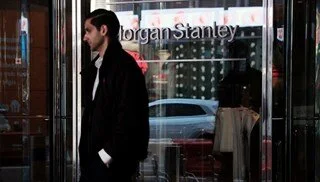

Morgan Stanley, a leading global financial services firm, has recently released its forecast on minimum wage trends, offering insights into what workers and businesses can expect in the near future. As the cost of living continues to rise, the debate around minimum wage increases has gained significant traction in various countries, particularly in the United States. Morgan Stanley’s analysis dives into the potential economic impacts of raising the minimum wage and predicts how such changes could shape labor markets and the broader economy.
The Economic Context of Minimum Wage Increases
In recent years, discussions around the minimum wage have become more prominent due to increasing inflation, higher living costs, and growing income inequality. Governments in various regions have implemented, or are considering, raising the minimum wage to help workers keep up with rising expenses. However, the impact of these increases remains a topic of debate among economists, with some arguing that higher wages could lead to inflationary pressures and job losses, while others believe it will boost consumer spending and improve living standards for low-income workers.
Morgan Stanley’s forecast takes a balanced approach, considering both the potential benefits and challenges that wage hikes might bring. According to the firm, wage increases could provide immediate relief to millions of low-income earners but may also trigger price inflation, particularly in sectors heavily reliant on minimum wage labor, such as retail and hospitality.
Forecasting the Impact on Businesses and Consumers
Morgan Stanley projects that minimum wage increases will have varied effects across different industries. While sectors like retail, fast food, and healthcare may face rising operational costs due to higher wages, others may benefit from increased consumer spending as low-income workers see more disposable income. The firm anticipates that businesses may adjust by increasing prices for goods and services to offset higher labor costs, potentially leading to inflation in consumer prices.
Additionally, Morgan Stanley’s analysis suggests that small businesses, which often operate on thinner profit margins, could face more significant challenges in absorbing higher labor costs. As a result, some small employers may look for automation solutions or reduce staffing levels, leading to job displacement in certain industries. The firm advises that governments should monitor these effects closely and consider providing support for small businesses during this transition.
Minimum Wage and Labor Market Dynamics
Morgan Stanley also notes that minimum wage increases could influence labor market dynamics by encouraging more workers to enter the workforce. With higher wages, more individuals may be motivated to seek employment or re-enter the job market after a period of absence. However, the firm also cautions that the impact on employment levels will depend on the rate of wage increases and the broader economic conditions at the time of implementation.
As part of its forecast, Morgan Stanley considers the possibility of a gradual increase in the minimum wage rather than sudden jumps. This approach, the firm argues, would allow businesses and workers to adjust more effectively to the new wage structure without significant disruptions to the economy.
Conclusion: Preparing for Wage Shifts
Morgan Stanley’s minimum wage forecast provides valuable insights for businesses, policymakers, and workers alike. While wage increases may provide much-needed relief for low-income earners, their economic consequences need to be carefully managed to avoid negative repercussions such as inflation or job loss. The firm’s analysis underscores the importance of gradual, well-planned increases in the minimum wage, with close attention to sector-specific challenges and broader economic conditions.
Recent Posts
Ether Surpasses 2021 Record Following Powell’s Rate Cut Hints
Ether's price surged past its 2021 record after Jerome Powell's speech hinted at potential rate…
Understanding the Federal Reserve’s Impact on Retirees’ Financial Security
Explore how the Federal Reserve's policies affect retirees and the broader economy, ensuring financial stability…
Federal Reserve Chair Candidate Interviews to Begin After Labor Day
Treasury Secretary Scott Bessent confirms interviews for Federal Reserve chair candidates will start post-Labor Day,…
Walmart and Competitors Reveal Earnings Amid Rising Tariff Impact
Walmart and rivals report earnings, highlighting tariff effects on consumer prices. Insights on market trends…
Financial Challenges Facing Seniors: Navigating a Tight Budget
Explore the financial struggles seniors face on limited incomes and discover strategies for effective budgeting…
U.S. Stock Futures Rise Ahead of Fed Meeting After Trump-Putin Summit
U.S. stock futures see slight gains following the Trump-Putin summit as investors prepare for the…